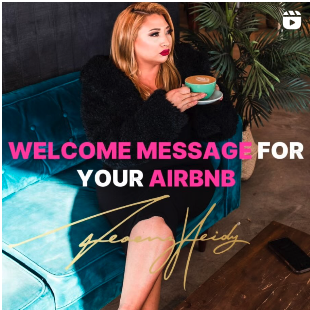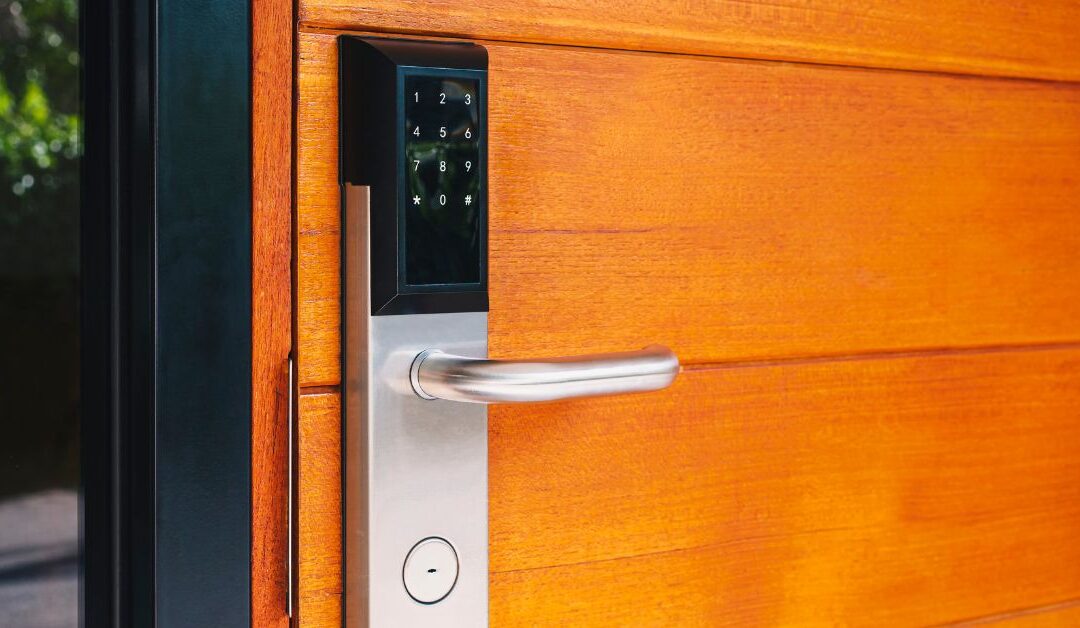Updated on October 28, 2024
Every interaction with your property matters from when guests book to when they check out. Well-optimized check-in and check-out processes reduce your stress and enhance the guest experience. Whether you choose a hands-off, self-check-in approach or prefer to greet your guests in person, the secret to impressing them is communicating, adding thoughtful touches, and always remembering how the experience will feel to them. In this blog post, industry experts will give real-life examples and expert advice on optimizing check-in and checkout processes. Adopting these processes will lead to happier guests, better reviews, and more repeat bookings.
Optimizing Check-In
Check-in is often the first interaction a guest has with your property, and a clear and smooth process can set the tone for their entire stay.
Offer Self-Check-In Options

Self-service check-in is a popular option for short-term rental hosts, and data shows that guests favor it. According to the 2023 Guest Communication Study by Touch Stay, 67% of guests prefer self-check-in, noting that it makes their stay easier and more enjoyable.
Self-check-in also gives hosts flexibility and allows them to accept last-minute bookings, notes Hostfully. Because you don’t need to be there to hand over keys, you can accommodate guests who book within hours of arrival.
Send Instructions Ahead of Time
When offering self-check-in, communication on how to get into the lockbox or use an entry code is critical. Because you won’t be there to guide them, you will need to convey those details before their arrival.
Touch Stay; some online travel agencies, such as Airbnb; and property management software, such as Hostaway and Hostfully, allow hosts to automate and time the release of this information.
“You can automate sharing check-in details by scheduling a text or email message to be sent to your guest through Touch Stay’s Memo,” said Tyann Marcink Hammond, Queen of Guest Experience at Touch Stay. “You can also set your Touch Stay guidebook to hide the check-in details topic until X number of days before arrival, and then the guidebook will reveal the information at the designated time.”
About 59% of guests want arrival information at least one week or more before their stay, according to The Guest Communication Study. Another 19% want the information one to two days before arrival, and 4% want it on the day of arrival. With such a range of preferences, repeating the information at intervals may be the best compromise: Send instructions a few days before arrival for those guests who find peace of mind from being prepared and repeat the information on the day of arrival for your more laid-back travelers.
“If you have security concerns with releasing detailed check-in information too early, the main piece of information is to communicate to your guest on when they will receive the door code and any other details you are not ready to share too early,” Tyann said. “Whether you choose to release the details 24 hours, 3 days, or 30 days before arrival, from the very beginning, communicate exactly when the check-in details will be shared.”
Provide Visuals
Pictures or videos can be invaluable in making the check-in process easier for your guest.
Jasper Ribbers, author of Get Paid for Your Pad and co-host of the podcast by the same name, recently shared an anecdote about his own check-in experience on Touch Stay’s The Guest Cast podcast:
After a long 12-hour flight from Amsterdam to Singapore, the last thing Jasper wanted to do was figure out how to access his short-term rental. But the host had sent such detailed instructions, complete with numbered bullet points and photos of every step of the process – from finding the entrance to operating the lockbox – that Jasper could visualize the entire process before he even left home.
“It made the whole plane ride more enjoyable because I knew exactly what to do when I landed,” he said.
This level of detail goes a long way in ensuring your guests have a seamless experience, especially after long travel days when their brains might be too foggy to figure out complicated instructions. Ribbers’ takeaway: “You can’t go too far in providing clear instructions.”
Some hosts go even further by creating videos showing guests exactly how to perform self-check-in.
Prioritize Safety and Security
When guests check into a vacation or short-term rental, safety and security are a top priority. Strategically place lighting so that guests can easily navigate the entrance and unlock the door without difficulty, especially those who are arriving at night. To deter any criminal activity, consider installing an exterior surveillance camera for added protection.
Read more in the RR Network: Can STRs have cameras? Security, compliance, and privacy considerations
If your cleaner opens windows or doors to air out the space, double-check that all entry points are securely locked before guests arrive. It’s also a good practice to turn on both exterior and interior lights, creating a welcoming and safe environment that puts guests at ease from the moment they arrive at the property.
Make a Positive First Impression
While many guests appreciate the ease of self-check-in, they still want to feel comfortable and welcomed.
Nothing matters more for a positive first impression than a clean, spotless, pleasant-smelling home where your guest feels comfortable putting away personal items, using the dishes, and climbing into bed without worries.

Setting the thermostat at a comfortable temperature is also a welcoming gesture. For example, guests who are arriving late on a hot summer night should not have to cool off the space before they go to bed. While there may be variations in guest preferences, keeping the home at room temperature (68-69 degrees Fahrenheit) allows the guest to quickly modify the temperature to their preference.
Small, thoughtful gestures, such as a welcome basket with local snacks and beverages or a handwritten note, can also make a world of difference.
Heidy Seoenz uses a whiteboard in her short-term rentals to write a welcome message, share the Wifi network and password, and leave host contact information.
“I ended up writing my name and phone number, so it’s very easy for them to call me if there are any issues,” she said in a recent Instagram reel.
Mary Beth Miles, CEO of the Vacation Rental Collective, leaves local fudge, locally bottled seltzers, and other regional delicacies for guests according to the destination.
“One of my favorites is in our newest market, Wisconsin,” she said during a recent episode of Expedia Group’s Powering Travel podcast. “They have this regional beer, Spotted Cow. When we host guests there, we make sure they can experience that hyper-local experience and really what is truly authentic about the communities in which we work.”
Treating your guests to a hyper-local experience also means greeting them with a physical or digital guidebook containing local recommendations for nearby shops, restaurants, attractions, and activities. For extra credit, leave a list of events happening in the area during their stay, suggests Hostfully.
Your guestbook can also help orient your guests to the home’s quirks, how to operate appliances, the thermostat, hot and cold water, and other important information they’ll need for their stay.
Lastly, you can make your guests more comfortable by stocking the kitchen with coffee, sugar, cream, olive oil, and basic spices. Providing basic kitchen supplies ensures your guests won’t have to make the grocery store their first stop and gives them time to settle into their new space.
These little touches create a positive first impression and can lead to glowing reviews.
Streamlining Checkout
Checkout is the final touchpoint in a guest’s stay, and a smooth process leaves a lasting positive impression.
Simple, Clear Instructions
When guests are preparing to leave, the last thing they want is to be bogged down with a long to-do list. Keep your checkout instructions simple – especially if your guests pay a sizeable cleaning fee. Generally, it’s best to focus on the essentials like locking the doors, turning off the lights, taking out the trash, and returning keys. However, you can add other items to the list to help speed up your turnover process and encourage guests to leave a review or sign your guestbook.
Addressing what guests don’t have to do is also a good idea. For example, some guests might have a habit of stripping the beds and tossing dirty towels on the bathroom floor. Hostfully has a customizable checklist where you can instruct guests to leave sheets and duvets on the bed and complete (or not worry about) other tasks.
Automated Checkout Reminders
Generally, a best practice is to send reminders the day before checkout. You can automate these messages through your property management software or Airbnb. These reminders nudge guests to follow checkout procedures and help you prepare for the next guest. You can also remind guests of the checkout time and why meeting the deadline is essential (for example, you can write when the cleaner comes to prepare the unit for the next guest).
Thank-You Note
After checkout, it’s always nice to send a message thanking your guests for their stay. A personal follow-up asking how the stay went encourages guests to leave reviews and helps build relationships, according to Hostaway. Property management software also allows you to automate these thank-you notes.
Request a Review
Don’t miss an opportunity to ask for reviews. Add a QR code linking to review sites in multiple locations and explain how reviews help your business thrive, Hostaway advises. This could include your welcome email, checkout instructions, and thank-you notes.
…


